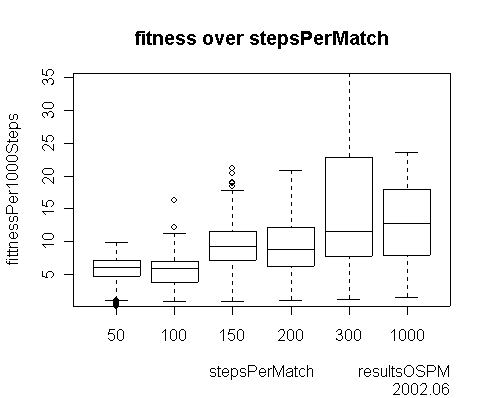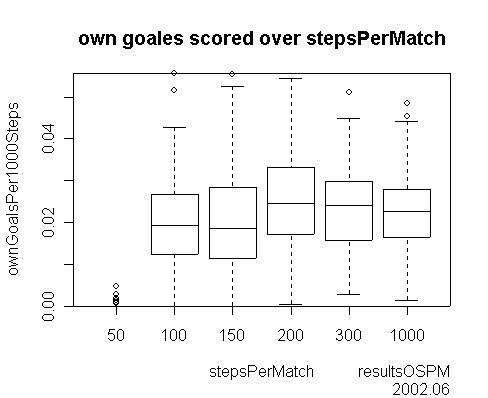| Raw data | OSi |
| Version | vsoc 0.04-vsoc 0.05a |
| Class | vsoc.camps.goalgetter.GGTestRunOSI |
| Project homepage | http://vsoc.sourceforge.net |
The goal of this test was to determine the optimal steps per for test runs. That means how many steps should should a match at least have to determine reasonable results. A small number of steps per match would increase the performance but the results could lead in wrong directions where bigger numbers of steps per match decrease the performance but you may trust the results. The question is to find the smallest number of steps per match that still leads to reasonable results.
In these tests 6 players (3 on every side) had to play against each other in one match.




The frequency plot shows a decreasing number of observations for longer matches. This is because longer matches last longer and therefore not so many matches could be played. The test should consider that fact and favorite the matches with longer matches, but did not (yet).
The fittness plot shows that even tests with 50 steps per match show reasonable values. We have to keep in mind that the fittness value is not only generated by scoring goals but also by just hitting the ball. A duration of 50 steps per match does not really give the players a chance to score goals.
Looking at the number of goals scored makes this fact transparent. Beginning at 150 steps per match the players start scoring goals.
The same result can be seen in own goals scored. Before 100 Steps per match the ball was never shot into the own goal. From 100 upward the rate seems to become constant.
A value of 150 steps per match seems to be reasonable for future tests. It gives the players a chance to score one goal. Longer matchses would train the players to get organized after a goal. This is not necessary at the moment, as the players are set to random positions at the beginning of every match. So they have to get organized anyway. A higher value of steps per match would only decrease the performance and therefore not be used .